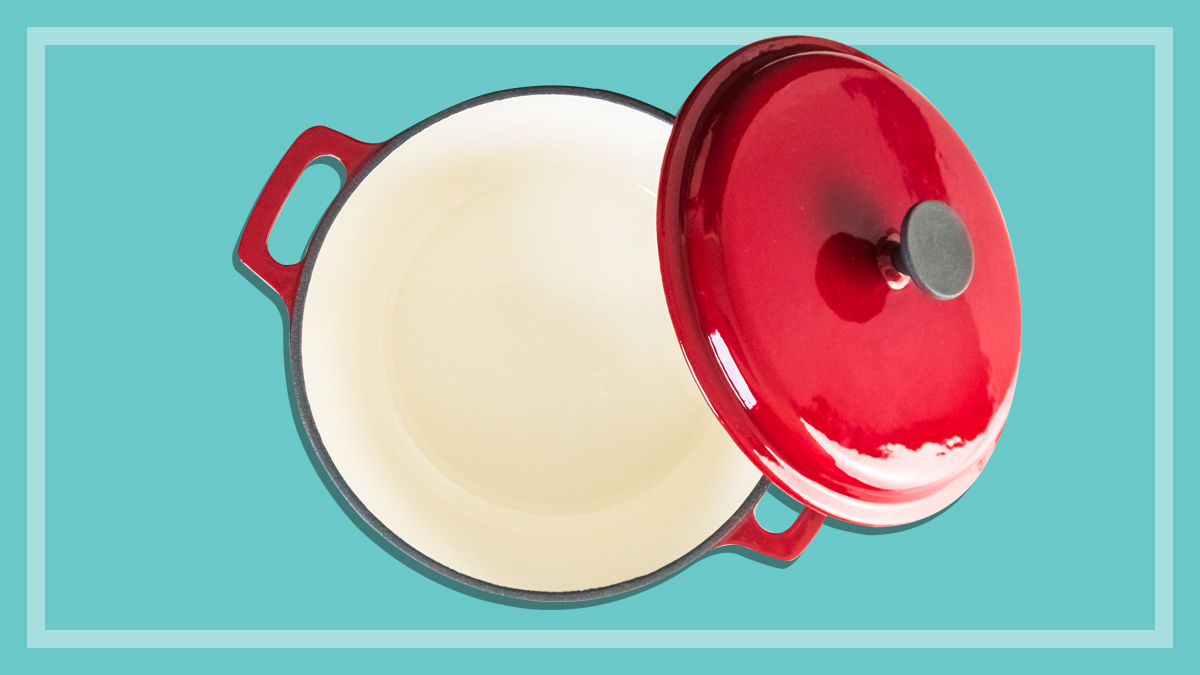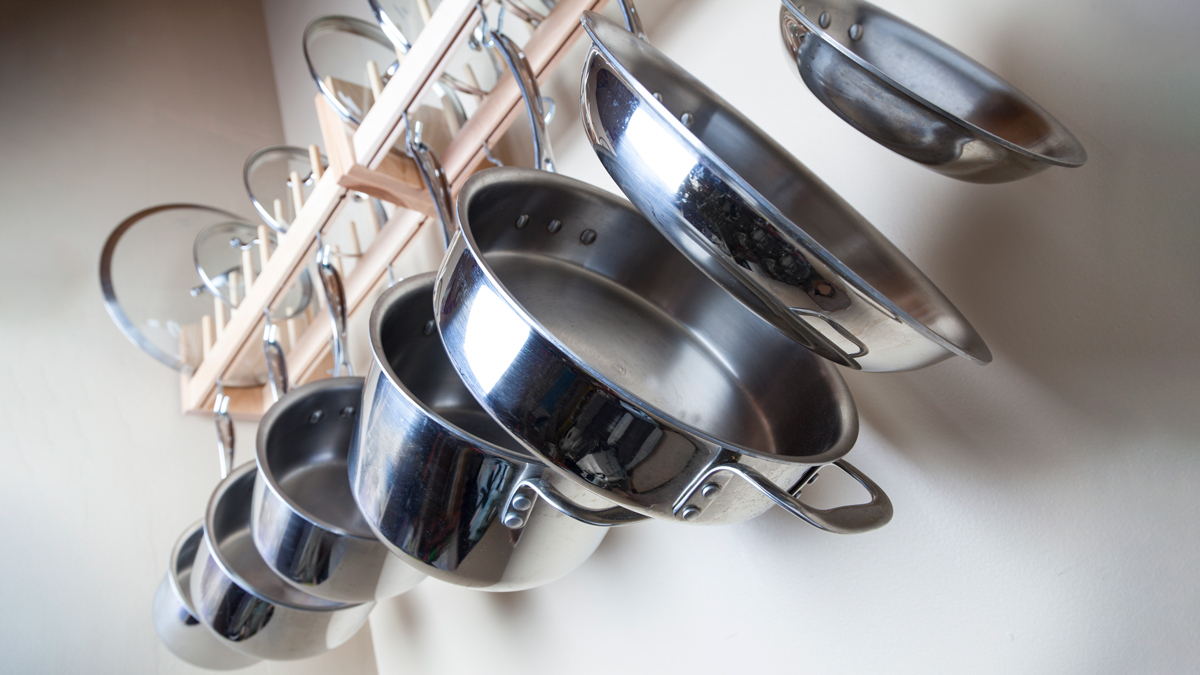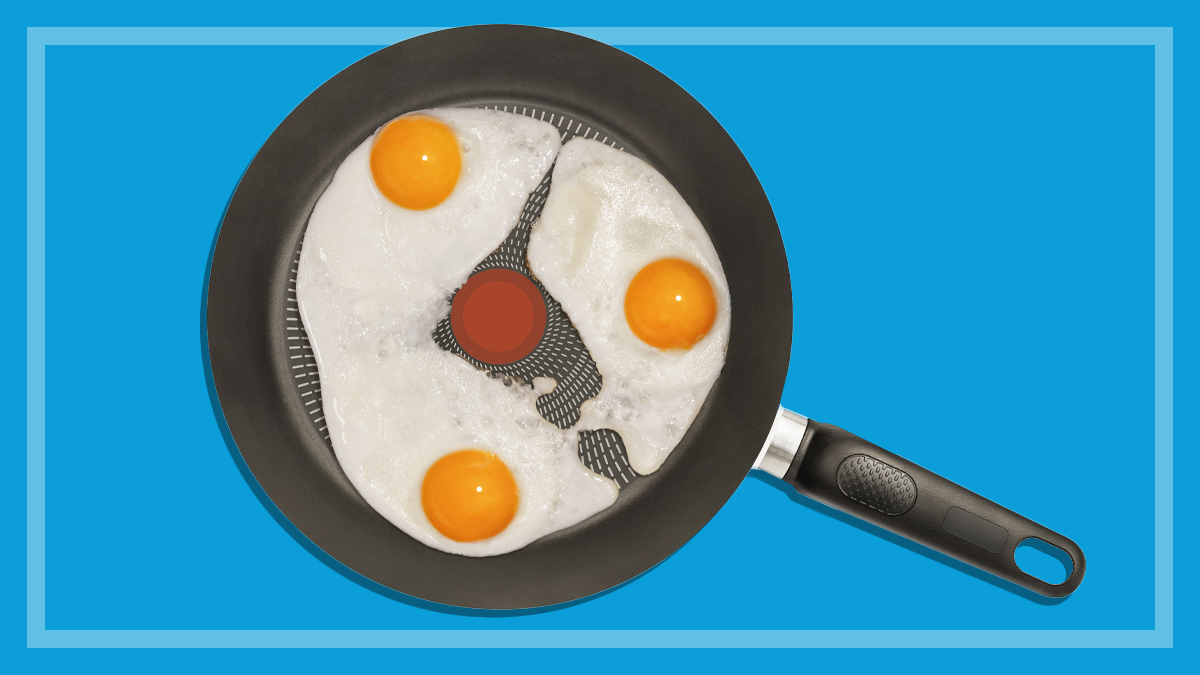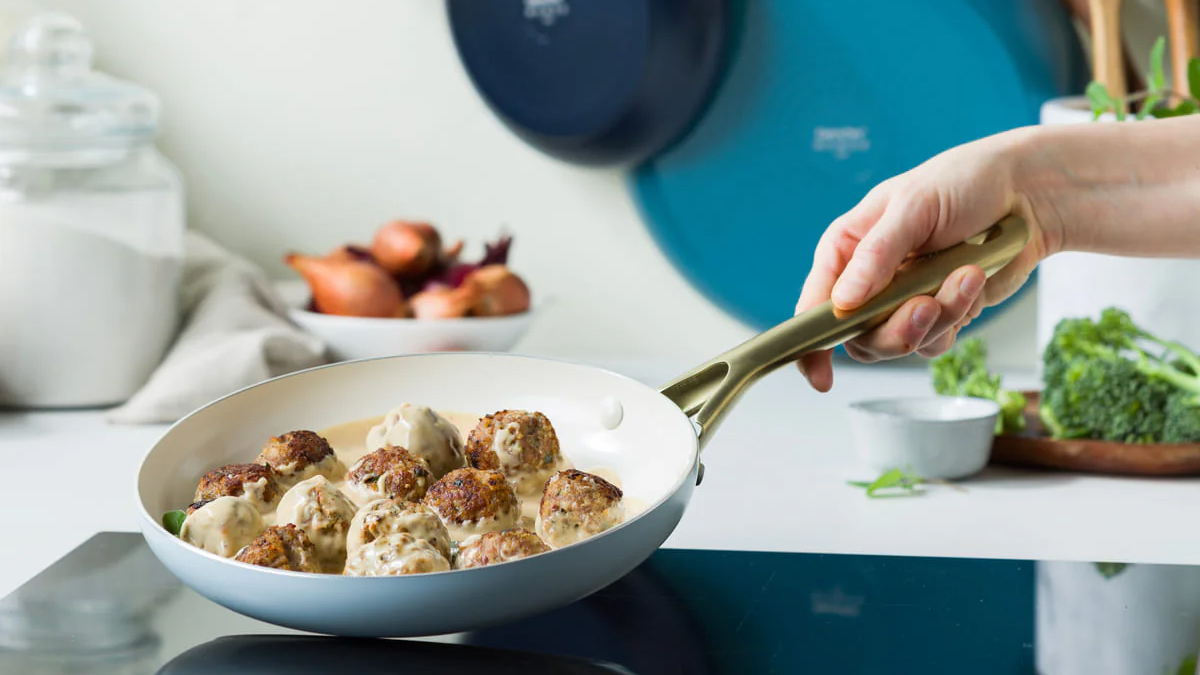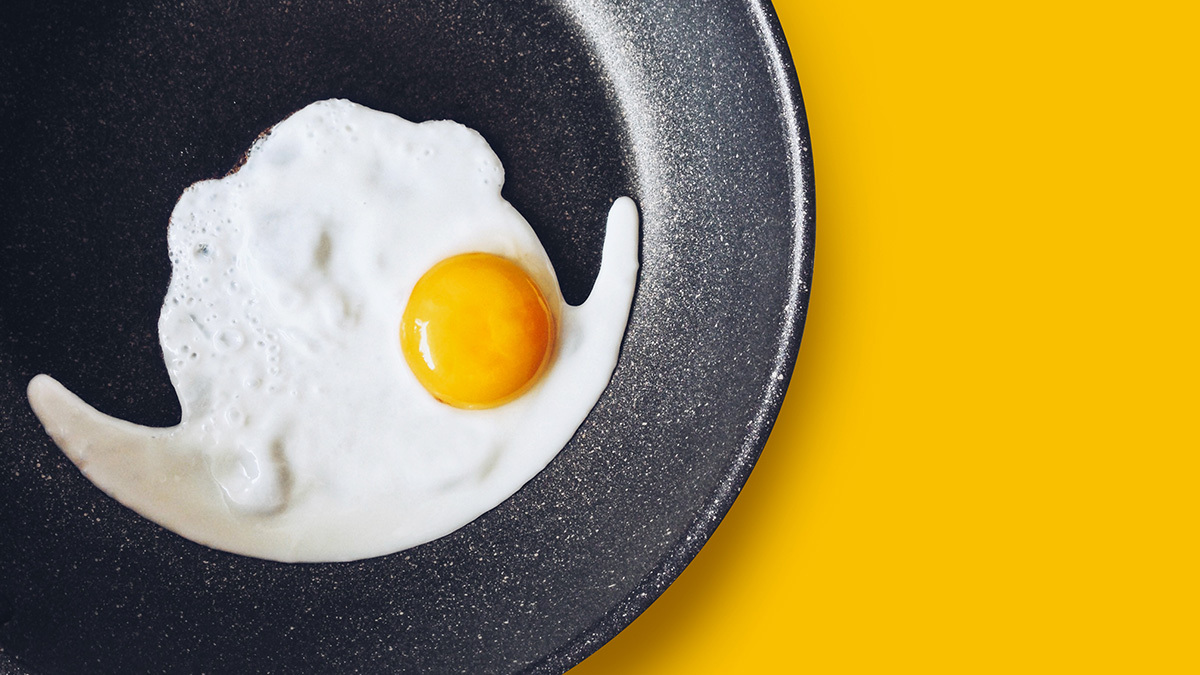Get our independent lab tests, expert reviews and honest advice.
Mistakes to avoid with your Dutch oven
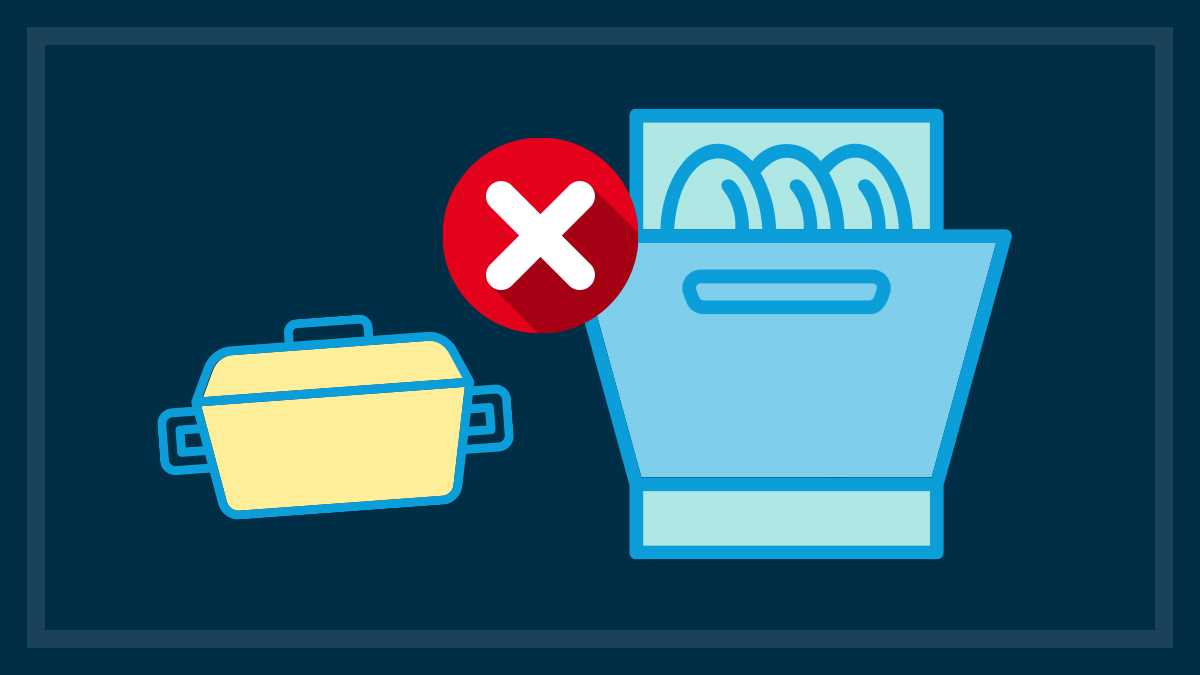
Cast-iron pots are versatile champions of the cookware world: an arguably essential kitchen item that can be used to prepare a huge variety of meals, take pride of place on your shelves and perhaps even be passed down through the generations.
Whether you opted for a cheap and cheerful pot from the likes of Kmart and Aldi, or invested hundreds in a premium Dutch oven from Le Creuset, Crumble, Ironclad or Lodge, there are some dos and don’ts you should keep in mind when caring for your cast-iron.
Although they’re sturdy kitchen workhorses, cast-iron pots do need a little TLC to ensure they maintain peak performance and quality over their (hopefully lengthy) lifetime.
CHOICE experts put Dutch ovens and casserole pots through a series of cooking and endurance tests to find out which ones will last the distance. Here, they share their big no-nos for cleaning, cooking and more to ensure your pot stays picture-perfect and turns out flavourful meals for years to come.
1. Putting in the dishwasher
It may be tempting to throw your stew-stained pot in the dishwasher but this is top of our list of Serious Sins.
“Putting your non-coated cast-iron pot in the dishwasher could easily cause it to rust and strip the seasoning from your pot, which will affect its non-stick capabilities,” says CHOICE kitchen expert Fiona Mair.
“And putting an enamel-coated Dutch oven in the dishwasher can dull the enamel surface over time.”
Instead, you should always wash your Dutch oven by hand with warm water. Some manufacturers also advise that you don’t use detergent or soap at all so check the instructions for your specific pot.
Ensure you use a non-abrasive sponge to wipe it out, which brings us to point number two (below).
2. Using hard scourers and metal spoons
Although some well-seasoned cast-iron pots will withstand the use of metal spoons, Fiona advises that it’s best to use wooden cooking implements, particularly on cheaper enamelled Dutch ovens.
Metal spoons may cause chips or scratches on the enamel coating, or damage the seasoning of a non-enamel-coated pot
Fiona Mair, CHOICE kitchen expert
“If you’re using a brand-new, unseasoned cast-iron pot or a pot that you’ve only just seasoned, you should use wooden, silicone or bamboo cooking utensils. If you use metal spoons, you may cause chips or scratches on the enamel coating of some pots, or damage the seasoning of a non-enamel-coated pot,” she says.
And although it might be tempting to scrub at those stubborn bits of stuck-on food residue with a metal scourer, this will also cause damage to the enamel coating or seasoning layer.
Instead use just a little detergent and a sponge, soft brush or non-scratch scourer to clean your cast-iron pot and wipe it out with paper towel.
If you have particularly stubborn stuck-on food, you can soak it in a little detergent and hot water.
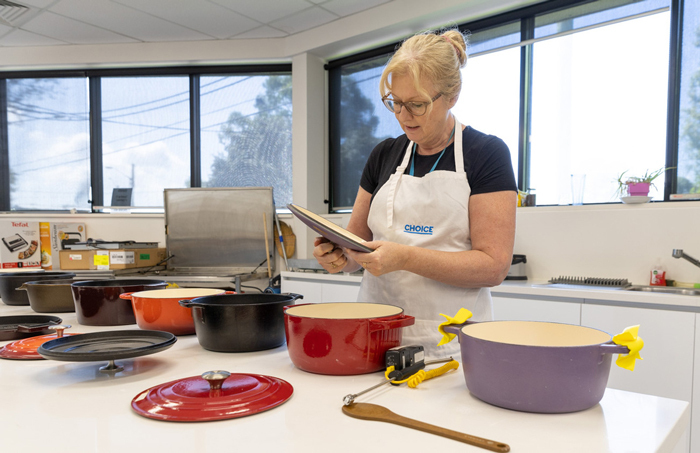
3. Not seasoning your pot correctly
Uncoated cast-iron pots, such as the ones we have tested from Ironclad, Victoria and Lodge with a blackened, matt look, need to be correctly seasoned before being used. You don’t need to season a glossy enamelled cast-iron pot.
Seasoning is the process by which a layer of oil is heated to form a protective coating over the pan, which will help prevent your food from sticking and the pan from rusting.
Some uncoated cast-iron pots come pre-seasoned, while most will come with detailed instructions or a ‘seasoning kit’ to help you achieve best results.
You will have to regularly season your pot to ensure it maintains an effective seasoned coating. It’s well worth the initial and ongoing effort as it’ll protect your pot and keep it in good nick so it’ll last for years.
“After every wash, you should give your cast-iron pot a little rub with oil to maintain the seasoning,” says Fiona.
You should also ensure your pot is well seasoned and has been used a few times before you cook acidic foods in it, such as a tomato-based stew. The acidity of the tomato could ruin your seasoning and could leave a metallic taste in your food.
4. Not drying it properly
A cast-iron Dutch oven can be prone to rust, particularly the uncoated ones, so you should always ensure that your pot is well dried before putting it on a shelf or leaving it on a benchtop, as it could easily leave an unsightly rusty ring.
It’s especially important to dry the interior well before storing it with a lid, as any remaining moisture inside could cause further rust or lead to a build-up of bacteria.
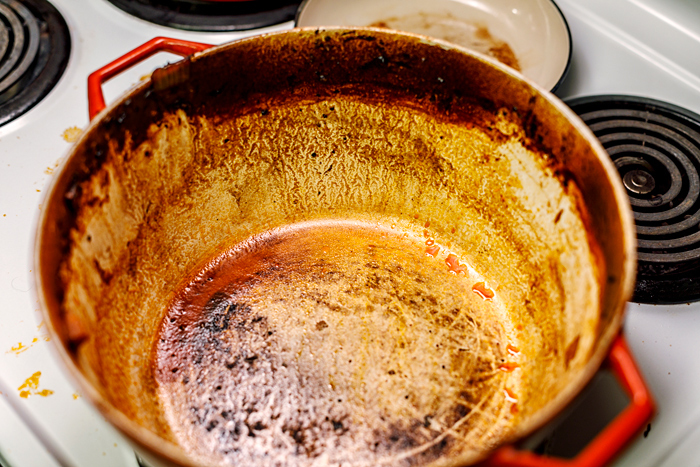
5. Buying without doing your research
How different can hunks of cast-iron shaped into a pot be when it comes to how well they will cook your spag bol?
The answer is, quite different!
There is a huge variety of both enamelled cast-iron pots and uncoated cast-iron pots available, all at varied price points, and they all perform differently in CHOICE testing.
You can spend anywhere from $30 up to several hundred dollars or more so Fiona says it’s important to understand what kind of pot you’re after and look out for a few key things.
As well as checking CHOICE reviews to find out how each pot performed, I’d recommend looking at our ease of use scores
Fiona Mair, CHOICE kitchen expert
“As well as checking CHOICE reviews to find out how each pot performed in our various cooking tests and which products we rate as the best casserole dishes and Dutch ovens, I’d recommend looking at our ease of use scores,” she says.
“We look at things that can really affect how enjoyable and easy the pots are to use, such as how comfortable the handle is to hold and how easy the lids and handles are to grip with a heavy load.”
If you can, head into the store to get a feel for how much the Dutch ovens weigh, as this can also vary quite a lot.
“Some of the Dutch ovens we tested are much heavier than others. During our testing, we found that the differences in the weights of the lids can be 200g or more and the overall weights of the pots can vary by up to 2kg, which can really make a difference to how easy they are to use,” says Fiona.
“Lifting them in and out of your oven when they’re filled with food can be a little tricky, particularly if you have mobility or dexterity issues.
“Care also needs to be taken when placing them on ceramic or induction cooktops so as not to slide them or drop them as this can crack the surface.”
You should also look at the quality of the handle on the lid, Fiona recommends. Look for one that is screwed in tightly with a washer, so the handle is firmly fastened to the lid and won’t loosen and become detached over time.
You can view detailed product images and the pros and cons that were flagged in our testing in our CHOICE Dutch oven and casserole dish reviews.
6. Applying extreme temperature changes
Thermal shock – applying either extreme hot or cold temperatures – is your precious cast iron pot’s worst enemy.
Rapid temperature change, such as if you put your fridge-cold Dutch oven over direct high heat or put a very hot pan into cold water – can cause cracking and warping which will affect your pot’s cooking performance.
If you’re heating it over a stovetop, start with a gentle heat first then gradually increase.
Dutch ovens can take a long time to cool down – rather than putting a hot pot in the sink, leave it to cool for a little bit before washing in warm water.

